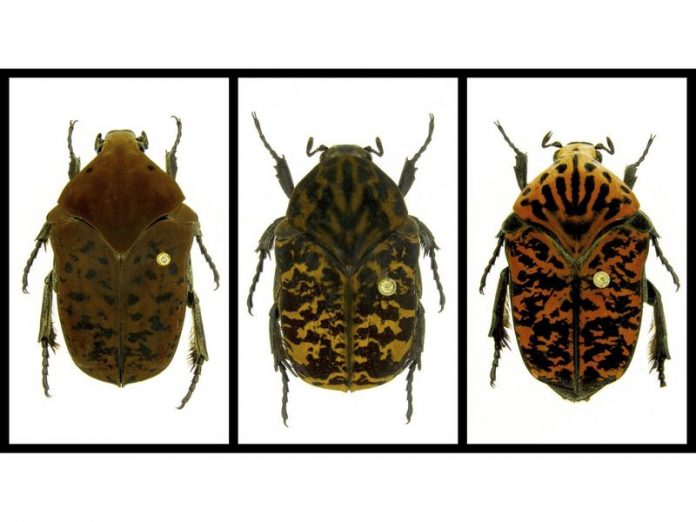Daenerys Targaryen, “Game of Thrones” favorite and legendary “mother of dragons,” is set to welcome three new children into her brood. But as Chris Peters reports for The Omaha World-Herald, this trio won’t be incinerating hapless enemies anytime soon: Unlike their namesakes—Daenerys’ three dragons, Drogon, Rhaegal and Viserion—these creatures are not mythical beasts, but exotic beetles whose main dragon-like characteristic is their fiery orange coloring.
The three beetles in question—Gymnetis drogoni, Gymnetis rhaegali and Gymnetis viserioni—are just a few of the more than 200 scarab beetle species named by University of Nebraska-Lincoln entomologist Brett C. Ratcliffe over the course of his 50-year career. Although Ratcliffe’s fantastical naming scheme was motivated partly by a love of the popular HBO series and its source material, George R.R. Martin’s “A Song of Ice and Fire” saga, he tells Peters that his underlying goal was to “bring public attention” to beetles’ little-known biodiversity.
“We’re still discovering life on Earth,” Ratcliffe says. “One of every four living things on Earth is a beetle. We haven’t discovered them all. We’re not even close.”
G. drogoni, G. rhaegali and G. viserioni are three of eight new species detailed in Ratcliffe’s latest academic analysis, a 250-page study entitled “A Monographic Revisio of the Genus Gymnetis Macleay, 1819.” Other species included have names inspired by traits such as “bee eater” and “gold bands,” as well as locations ranging from the highly specific Puerto Rico to the relatively vague “northernmost.”
According to Chris Dunker of The Lincoln Journal Star, G. drogoni, which is native to Colombia, Ecuador, Brazil and Argentina, boasts reddish-brown and black-speckled coloring similar to that of Drogon, whom the “Game of Thrones” wiki notes is covered in “black and red colored scales and red-black wings.” (Vulture’s Hillary Kelly adds that Drogon’s scales and teeth are black, while his eyes are ruby red.) G. rhaegal, on the other hand, is only found in French Guiana, and its “black-and-light orange or tawny” coloring only somewhat aligns with Rhaegal’s “green and bronze colored scales, and his yellow-orange colored wings.”
Ratcliffe’s final Westeros-inspired species, G. viserioni, is more brightly colored than its fellow beetles. Still, thanks to its orange-black patterning, the Central and South American native is more reminiscent of Halloween than its “Game of Thrones” counterpart; as Kelly explains, Viserion is “mostly a cream color, although Daenerys refers to him as her ‘white dragon,’ and his eyes and horns are gold.”
This isn’t the first time Ratcliffe has bestowed newfound species with creative names: Dunker writes that the entomologist dubbed a 1976 discovery Strategus Longichomperus, or the long-chomper, in honor of its lengthy pincers. And in 1992, he called a June bug beetle Cyclocephala nodanotherwon, a title that, when spoken slowly, reveals its not-so-hidden meaning: “Not another one.”
“The rules of nomenclature recommend staying away from insulting or humorous names,” Ratcliffe tells Dunker.
But, he concludes, “I don’t see the purpose in staying away from a humorous name”—or, it seems, one that simultaneously celebrates pop culture and recognizes the unheralded diversity of one of Earth’s humblest yet most ubiquitous species.













